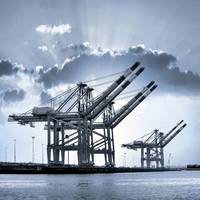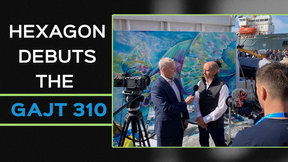
Sovcomflot Ups its Role in the Sakhalin-2 Project
long-term time charter contracts with Sakhalin Energy. The three ships are multipurpose ice-class (Ice-10) supply vessels, which have been under the management of the joint venture SCF Swire Offshore since 2009. The vessels are manned by professional crews consisting of mariners from the Russian Far East and are operated under the Russian flag. Under the signed agreements, the vessels will continue to be used for year-round delivery of supplies and consumables to three production platforms in the Sea of Okhotsk. In the event of an emergency, the vessels will be able to provide environmental

Polarcus ‘Riding Out the Storm’
onshore and offshore have pulled together to demonstrate our industry leadership during these challenging times. Our modern and right-sized seismic fleet continues to deliver rock-solid performance even when undertaking the most complex of projects in challenging remote locations such as the Russian Far East. Additionally, our geophysical experts continue to innovate. Their latest output, XArray, is a combined acquisition and processing solution for delivering improved inline and crossline resolution using real data while retaining the efficiencies of large seismic spreads. This saves both time
Production Begins at Sakhalin-1 Arkutun-Dagi Field
has begun production at the Sakhalin-1 project’s Arkutun-Dagi field, the last of the three fields to be developed. Peak daily production from the field is expected to reach 90,000 barrels, the company said. The field, located off the northeast coast of Sakhalin Island in the Russian Far East, will bring total daily production at Sakhalin-1 to more than 200,000 barrels. The other two fields, Chayvo and Odoptu, began production in 2005 and 2010, respectively. Production from Sakhalin-1’s Arkutun-Dagi field will be routed through the existing Chayvo onshore processing
Oil Majors Expand Far North Exploration Projects
an additional approximately 600,000 square kilometers (150 million acres) of exploration acreage in the Russian Arctic and potential participation by Rosneft (or its affiliate) in the Point Thomson project in Alaska. They have also agreed to conduct a joint study on a potential LNG project in the Russian Far East. The agreements, which include plans to explore seven new blocks in the Chukchi Sea, Laptev Sea and Kara Sea, were signed by Igor Sechin, president of Rosneft, and Stephen Greenlee, president of ExxonMobil Exploration Company, in the presence of Russian President Vladimir Putin. The license

 February 2025
February 2025





